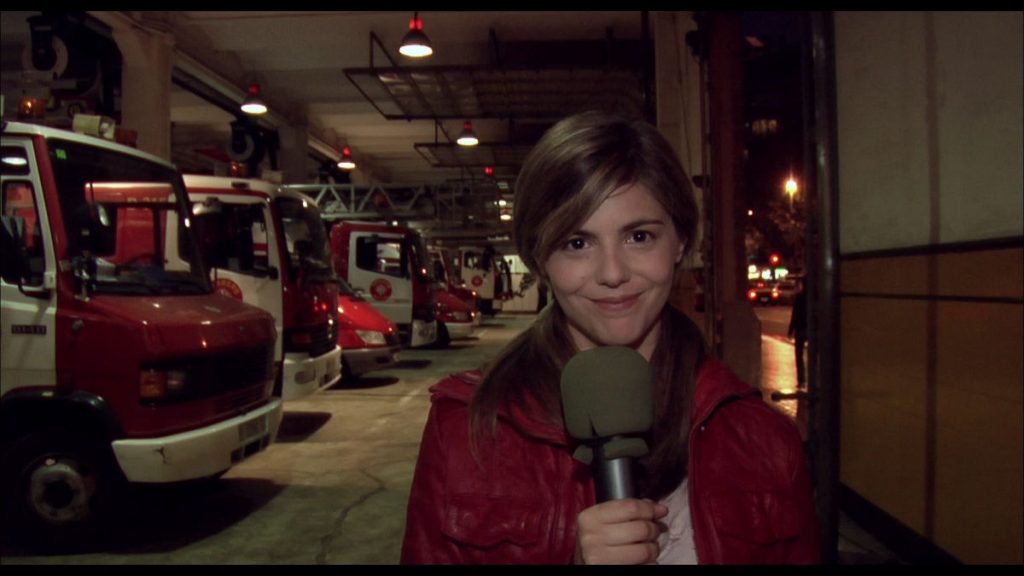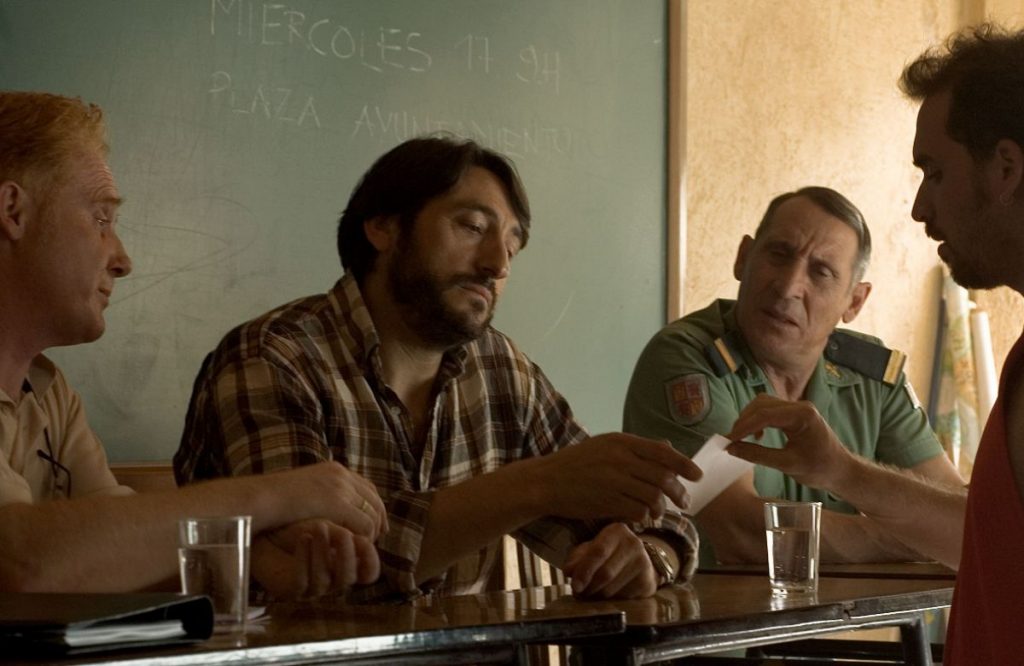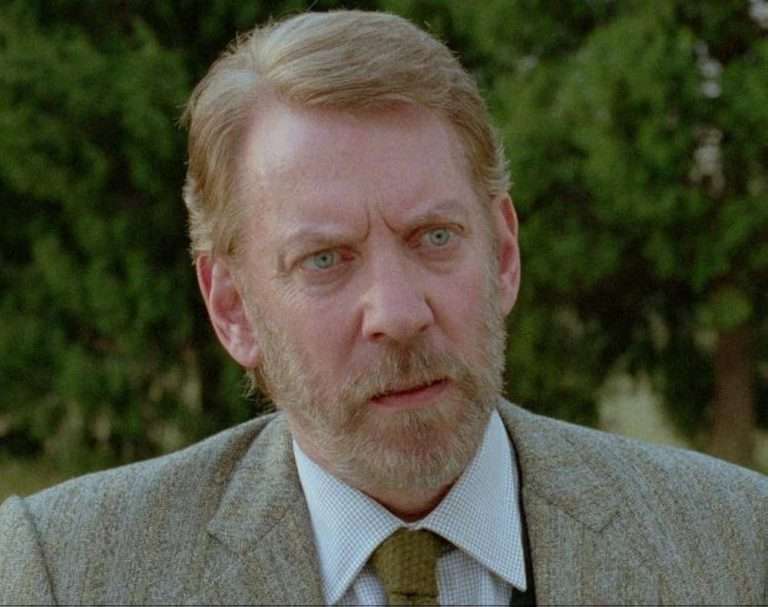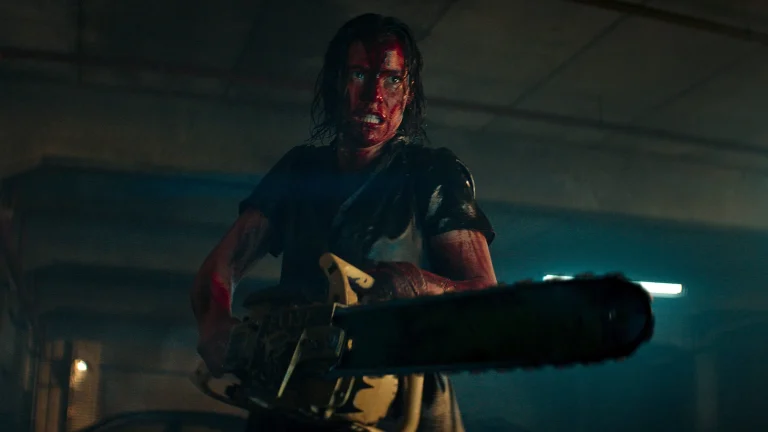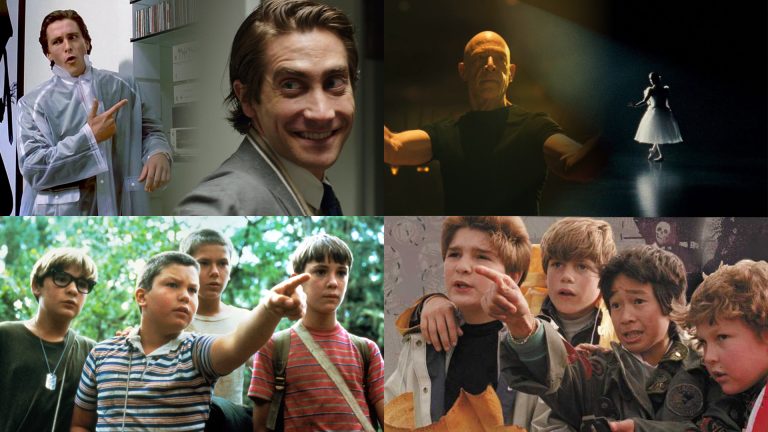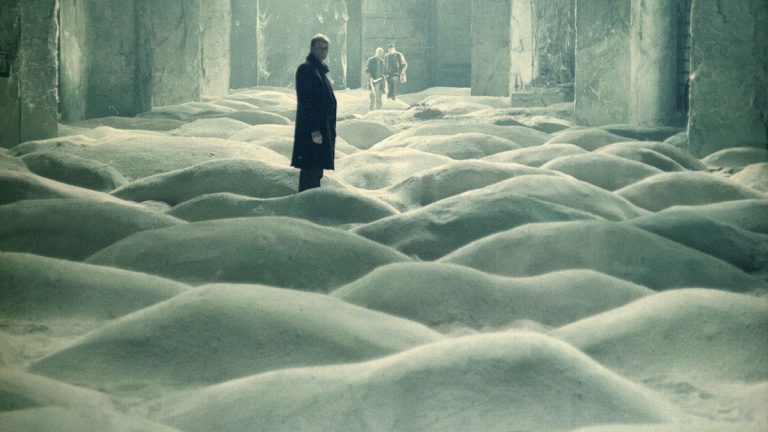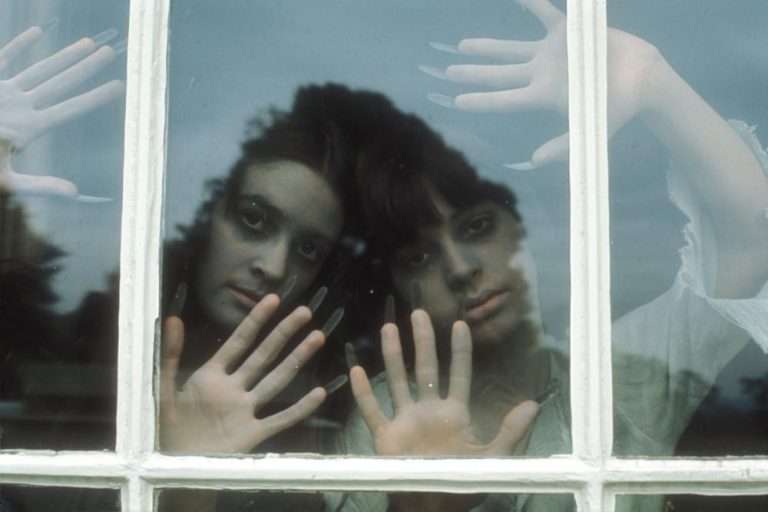A thriller can be horrific, humane, exciting, and emotional and harbor all kinds of stories. It’s a film genre characterized by heightened suspense, excitement, and uncertainty. From Harold Lloyd clutching the hands of a giant clock on Safety Last! to Hae il Park searching for Tang Wei on a shore in Decision To Leave, the thriller genre has come a long way.
Of late, the world has been exposed to a tsunami of Spanish thriller films courtesy of OTT platforms. They have them all: the good, the bad, and the ugly. Few are formulaic, comfortable, and don’t wish to smash boundaries, but others are expansive, bold, complex, and sharply edged.
Wrapped under formidable thrillers, these are the 20 lustrous titles I’ve instantly fallen in love with. Most of them are social satires that often attest to the mortifying truth that the removal of the thin veneer of humanity is easy. These films follow the human psyche on the verge of imploding. And, much like their French counterparts, many Spanish thriller films are slow-burns. They are patient in their deliverance but unwavering in their promises.
I’ve tried to assemble these 20 Great Spanish Thriller films that I think no cinema lover should miss. You can re-order them as your choice, but do not miss them.
20. The Invisible Guest (2016)
Director Oriol Paulo is now synonymous with Spanish thriller cinema. The Innocent (2021), Mirage (2018), and The Body (2012) are all oscillating somewhere between average and excellent. The Invisible Guest swings more towards the latter for me, hence its presence on my list.
A young businessman wakes up in a locked hotel room next to the body of his dead lover. He hires a prestigious lawyer to defend him, and throughout one night, they work together to find out what happened.
It’s a mystery thriller that completely submerges itself in the genre. The flabbergasting twists, the perpetually rising tension, the unreliable protagonist, and the race-against-time narrative will keep you guessing till the end. And all of it, with virtually no action sequences.
The hotel in The Invisible Guest shadows the Overlook Hotel from Stanley Kubrick’s masterpiece – The Shining (1980) – a film where the female protagonist is hunted down by a psychopathic lover, much like in this film. The murdered girlfriend has a similar haircut to The Shining‘s Wendy Torrance. The reflection is clear.
What doesn’t work here is the final twist that feels outlandish. It undid this taut thriller for me. Another aspect that did not fly with me was the locked-room syntax. After a while, the complexity of assembling a thriller in a confined space starts to get consumed. And I had the same issue with its official Hindi remake, Badla (2019).
While Sujoy Ghosh’s version could never keep its nose above the problematic waters, Paulo’s original never lets itself drown. With all its flaws, The Invisible Man is one of the best Spanish thrillers there are.
19. Eye For An Eye (2019)
After being diagnosed with a terminal disease, a cartel boss gets early release from prison on medical grounds. He is oblivious that the nurse in charge of his care plans to take revenge.
Paco Plaza is to Spanish thriller cinema what Ram Gopal Verma is to Indian horror. From absolute excellence to downright awful, his films’ range is extreme. After co-directing the thrilling [•REC] series, and the terrific Verónica (2017), he brought us another exciting thriller with Eye For An Eye.
The movie has a brawny dramatic branch, and it broaches subjects such as family, treachery, violence, and revenge. The motives of its principal characters are categorically going to make you uncomfortable.
Checkout – Every Quentin Tarantino Film Ranked
Even though the premise is pretty formulaic, and it’s not a genre-bending crime/thriller, Eye For An Eye draws its strength from the integrity of its characters. Netflix bought the worldwide rights for the film for a reported seven-figure amount, the biggest acquisition for an indie Spanish-language film. Eye For An Eye is a slow-burning revenge thriller, so don’t get into it expecting the Kill Bill vibe.
18. Thesis (1996)
Before director Alejandro Amenábar shocked the world with The Others (2001), cine enthusiasts considered his 1996 Spanish thriller, Tesis, as one of the best from his filmography. And yet again, it was a feature debut of the director. It feels like I am building a list of Best Debut features!
While doing a thesis about violence, a Spanish film student (Ana Torrent) finds a snuff videotape showing the torture and murder of a missing girl. She later finds out that the murdered girl in the video was from her college.
For a film about violence and the moment of death, we never see either. Amenábar has always been averse to any visual portrayal of violence or blood, so he smartly avoids showing any in his film about violence! And it’s an incredible achievement in storytelling.
Also, Read: The 10 Best Movies on Crisis-Ridden Facial Surgery
Self-admittedly, Amenábar never took his actors seriously. You can find the proof in the ‘extra segment’ of the ‘Tesis’ DVD, where actor Fele Martinez complains about his direction. Amenábar says he always focuses on his shots, not on his actors.
However, this changed with The Others (2001) when producers insisted on making the film in English. Alien to the language back then, Amenábar started to read English books about actors and realized they were the best special effects a filmmaker could have. The voyeurism in the film confines the audience into an ethical crisis. Not gratuitous, but it will make you think. Tesis is one of the best Spanish thriller films of all time.
17. The Body (2012)
Director Oriol Paulo’s box-office record has been rather peculiar compared to any other director you might know. His movies have consistently performed ten times better in the Middle Kingdom than in his home ground. Inexplicably, the Chinese audience has been appreciative of his work.
Coming back to The Body, it’s an excellent yet flawed thriller. It has ambitious script structures and suspense, and the characters are in extreme situations. The body of a dead woman goes missing from the morgue. Her husband killed her so that he could be with his young girlfriend. When the husband is called in for questioning, he receives messages from beyond the grave.
It’s a lean, moody, exciting, and slightly predictable thriller. Paulo cites Hitchcock and the great Henri-Georges Clouzot as massive inspirations. He says he has learned what the narrative pulse is in a film from these two titans.
‘The Body’ got many official and unofficial remakes around the globe, including a decent Korean version, Vanished (2018); a marginally bearable Kannada-Tamil unofficial remake, Game (2016); an official (read insulting) Hindi remake, The Body (2019), marking the final appearance of late Rishi Kapoor.
The Body is an actor’s film. The performances in the film are solid and elevate it despite the contrived plot. While it never reaches a nerve-shredding atmosphere, The Body would still keep you at the edge of your seat.
16. Rec (2007)
[•REC] is exhausting to watch. Don’t get me wrong, and it’s not dull by any stretch of the imagination. A few minutes into the film, the tension steadily begins to roar and doesn’t go down even for a moment. You might have to take breaks or remind yourself to breathe because it’s extremely stressful.
A TV reporter, Angela (Manuela Velasco), and her cameraman, Pablo (Pablo Rosso), are filming a documentary series; their episode focuses on the daily struggles of firefighters. After meeting the firemen and several routine interviews, they receive an urgent stress call. The TV crew follows the squad, and a supposedly routine stress call quickly spirals out of control.
It’s a nail-biting, hair-raising thriller throughout before the paranormal overtones suddenly arise in the final moments. Never sufficiently explored, the out worldly motifs are rather exasperating. But I would seriously recommend you avoid such snarls and enjoy the film because it’s a terrific, tense thriller.
The actors were never given the script in its entirety, so none of them knew of their character’s fates, sometimes not until the day they were filming their scenes. So, the actors were often stressed, nervous, and apprehensive on the day of filming, which suited the film perfectly.
Manuela Velasco really is a TV presenter in her native Spain, and the rest of the supporting cast are also largely unknown faces who were hired based on their improv skills.
Following the surprise success of The Blair Witch Project (1999), the audience was submerged under the tsunami of the found-footage formula. Few worked, and many did not. However, co-directors Jaume Balagueró & Paco Plaza injected much-needed life into the genre. Be a little forgiving while watching it, and you’ll be surprised by [•REC].
15. Nine Queens (2000)
I was in a grave predicament whether to include director Fabián Bielinsky’s first film (Nine Queens) or his last (The Aura, 2005) for the list because I love them equally. I preferred the former because I find it awfully original and confidently ambitious. Made on a shoestring budget, Nine Queens is eminently local yet accessible universally.
It is the story of two small-time swindlers, Juan (Gastón Pauls), and Marcos (Ricardo Darín), who team up after meeting in a convenience store and become involved in a half-million-dollar deal. As deceptions and duplicity mount, it becomes more and more difficult to figure out who is conning whom, and we begin to ask ourselves, “Who isn’t a thief?”. This film is about manipulation, with a calculative deadpan comedy. The laughs are dark.
Bielinsky, says he has never studied acting, so his instructions to the actors were something like, “Look, this is not working, but I can’t tell you exactly what to do.” Then with a collaborative approach, they would come to a common ground.
Also, Read: 10 Films To Watch If You Love Inception
Even his shooting techniques were unprecedented; wherever he could, Bielinsky used hidden cameras, like in trucks across the street, etc., and the actors had to work in the middle of the street, with no lights, no visible cameras, no nothing. They were the characters. And the cameramen didn’t know exactly where the actors would stop, so they had to be very quick on their feet.
The Hollywood remake of Nine Queens was John C. Reilly, Diego Luna and Maggie Gyllenhall starrer Criminal (2004). And the Indian remake was Bluffmaster! (2005) starring Abhishek Bachchan, Priyanka Chopra, and Ritesh Deshmukh.
Rarely will you witness a film that is so incessantly conscientious about the thrills, power, and triteness of the con hustle. Nine Queens won 21 awards out of 28 nominations and is an Argentinian classic.
14. Killing Words (2003)
Killing Words was the second directorial venture of the actress-turned-director Laura Mañá. And it’s a far cry from her debut feminist rom-com, Compassionate Sex (2000). She is in no mood for love in this one!
Laura’s command over this psychological thriller is so overwhelming that she forces you to see the film; by that, I mean you cannot watch the film in the background. Every word, every frame, every reaction is potent.
Ramon (Dario Grandinetti) kidnaps his ex-wife Laura (Goya Toledo) to play psychological games with her. He is a serial killer who wants her to confess that she lied during the divorce hearing. And he starts to play word chains with her where the stakes are high & she needs to win each round to get closer to surviving. He gets arrested before he can finish, and during the interrogation, he relentlessly denies Laura’s whereabouts.
As the two police officers try to unwind the veracity, the roles of victim and victimizer are repeatedly switched. And, suddenly, the audience finds themselves on a capricious surface.
The limited, insuperable plot, steady rhythm, sterile atmosphere, and edgy dynamics scar our conscience. Dario Grandinetti dominates the cast of four. He gives a seductive, committed performance and is especially superlative in the interrogation scenes. Laura also meticulously ensures that Goya’s character never blooms into a full-fledged victim. Layers peel off as we get involved, much like Begum Para in Dedh Ishqiya (2014) back home.The raw, chill-inducing tension is unmissable in the film. Don’t miss it.
13. The Orphanage (2007)
Laura (Belén Rueda) has happy memories of her childhood in an orphanage. She convinces her husband to buy the place and helps her convert it into a home for sick children. One day, her adopted son, Simón (Roger Príncep), disappears. Simon is critically ill, and when he is still missing several months later, he is presumed dead. Grief-stricken Laura believes she hears spirits, who may or may not be trying to help her find the boy.
Though many might categorize The Orphanage as horror, it magnificently works as a thriller also because of its absolutely devoid of cheap scares. Director J.A. Bayona turned this horror into a very internal, submerging, and profound study of grief, something that Mike Flanagan also imbibes immaculately in his horror masterpieces.
Also, read: 10 Films to Watch if you liked ‘Afterlife of the Party’ on Netflix
Writer Sergio G. Sánchez wrote the screenplay in 1996 and wanted to direct it himself, but no Spanish production company was ready to put their money on a virgin director. In 2004, on a chance meeting with Bayona, he discussed the script, and Bayona was instantly interested in making it and turned to his mentor, Guillermo del Toro, to get it made.
When Sánchez told the little girl who plays the blind orphan that she had pretty eyes, she replied, “Oh, do you like them? I picked them out myself!”. He didn’t know that her parents let her pick the glass eye as one of the last things she could still see.
The performances are minimalistic but utterly convincing and expressive. Bayona still needs to outdo himself after all these years. The Orphanage remains his best work to date and one of the greatest Spanish thrillers (or horror, for that matter)!
12. Burnt Money (2001)
Burnt Money is much beyond being just a brilliant thriller; it’s a multilayered fable representing the complexity of human existence and the decayed obsession for power, greed and corruption. But, at heart, it’s a love story…a love story between two broken, damaged men.
Based on a true story, the film is set in Argentina in 1965 and follows the tumultuous relationship between two men who became lovers and ultimately ruthless bank robbers in a notoriously famous footnote in the annals of crime history. After a large-scale hold-up that turns bloody, the two men must flee. It is not long before the police surround the building they are in, and they must confront their demons to survive.
It is based on Ricardo Piglia’s 1997 novel of the same name, which was inspired by the true story of a notorious 1965 bank robbery in Buenos Aires. Many even believe that the film is more authentic to the event than the book.
Though, director Marcelo Piñeyro took minute cinematic liberties to deepen the emotional commitment of the audience. For example (*spoiler alert*), the film shows both men die in the siege, holding hands, half-naked and in underwear, in a pool of blood. That happened; however, their hands were separated before the official police photographs were taken. So, the world never saw the image of two dead men bracing each other, even in their death, until Burnt Money.
Such nuanced, tender moments cut deep and will make you bleed, something you conventionally won’t expect from a thriller. The emotional branch it offers is solid and brawny, and it won’t let you slip. Burnt Money attests to the incomparable voice of Marcelo Piñeyro and has the promise of spectacle. Make sure you catch this intense thriller if you haven’t already.
11. Julia’s Eyes (2010)
Guillem Morales’ Julia’s Eyes is not only one of the greatest Spanish thrillers but also an exquisite visual treat. The film follows Julia (Belén Rueda) as she is getting closer to solving her twin sister’s death, while a degenerative eye disease makes her increasingly blind.
The script seduces the audience and puts them in Julia’s shoes. So, they see what she sees; they fear what Julia is afraid of. This commitment to the audience’s involvement makes it one of the most riveting and satisfying experiences.
Guillem just had an image of a woman with bandaged eyes. Her eyes have been operated upon, and she cannot remove the bandage for two weeks. With this image and information in his head, he started to develop the plot with writer Oriol Paulo. While the script was still a draft, he met and pitched the idea to Guillermo del Toro.
The first meeting was a ‘disaster’ as per Guillem, who was trying to narrate the screenplay of the first 20-mins of Julia’s Eyes. While Julia has bandages on her eyes, the audience won’t see the faces of the characters. When you see this in the movie, it’s fantastically daring. But, this narration left Guillermo baffled, and he didn’t believe Morales. Nonetheless, he loved the story and eventually agreed to produce the film.
Originally planned to be filmed in English, once Guillermo del Toro became involved as a producer, and Universal Pictures saw an opportunity to start its first Spanish production, the idea was changed.
Julia’s Eyes throws enough twists to keep a rattlesnake delighted, and when things start to turn a little orchestrated, its dramatic twists keep you invested. As one critic rightly said, this cannily uncanny film resonates.
10. May God Save Us (2016)
May God Save Us is a melancholic, uncomfortable, and asphyxiating thriller. Two police inspectors in Madrid take on a case involving a prolific serial killer as city officials make their preparations for a scheduled Pope visit. “Two policemen chasing a serial killer,” with a plot cliched and unoriginal, director Rodrigo Sorogoyen created a universe with an ecosystem of loneliness, resentment, diabolic violence, grime, and moral ruin.
The film starts in a documentary style, with a blurry, shaky hand-held camera. The film tries to plow through the ugliness and closeness between human beings. And when the plot darkens, the film shifts gear with a steady cam and more elegant and gentler framing, and aesthetically, the film get richer. Sorogoyen wanted his audience to like what they saw but be discomfited by the squalor and violence. This dichotomy is a rarity.
The narrative gets as complex as the characters and increasingly tense. Sorogoyen says that the theme of friendship in the film was secondary until the shooting started. It was only once they started work with the actors that the film eventually became the story of two people who felt alone and found. The chemistry of the lead actors, Antonio de la and Torre Roberto Álamo, actually changed the motif of the film. Once again, a rarity.
The English title is mistranslated since the Spanish means “May God Forgive Us.” So, if you happen to find it on any OTT in your region, you might want to search for May God Forgive Us instead because they’ve eventually changed it.
A magnificent police procedural thriller, May God Save Us is an ethical portrayal of despicable human intentions. It’s a very curious film, which asks the right questions, hence making you uncomfortable.
9. The Bar (2017)

When an unseen sniper opens fire in downtown Madrid, a diverse group of people takes refuge in their local bar. The longer they’re trapped there, the more paranoia and suspicion threaten to usurp civility. Throw in a possible viral outbreak, and viciousness ensues. Director Álex de la Iglesia creates claustrophobia in the confined space of a bar, and his cinematographer, Ángel Amorós, simply adds to his vision.
The modern, metallic-cold-like atmosphere and the understated camerawork are diligently pared back to spotlight the actors and create raw, chill-provoking tension. The title sequence mildly spoils the big reveal that is to come, so oversee it.
The Bar exposes the world to a small microcosm of Spanish society. The film works a bit like a stage play, where tensions between the main characters grab all the attention. But, what Iglesia trades off for superb thrills & black comedy, is a sacrifice of character depth. The central figures feel stagnant. If you dare to laugh, there are enough moments in dark corners.
Iglesia says he aimed to return to the style of 1960s madcap comedies in which anything can happen, a la Stanley Kramer’s 1963 epic, It’s a Mad, Mad, Mad, Mad World. But, he decided to camouflage a superlative thriller on it. It’s a study of multiple motivations and human interaction in extreme situations. The Bar is one nasty, mean little film. Don’t miss it.
8. Marshland (2014)
Marshland is a metaphor for the transition from Franco’s dictatorship to democracy. Two adolescents disappear from a town deep in the Guadalquivir wetlands. For investigation, Madrid sends two detectives; both don’t precisely get along, have opposite standpoints, and are not at the prime of their careers. A strike threatens the rice harvest and complicates the investigations of the two policemen, pressed to solve the case as quickly as possible. They must settle their differences to bring a murderer to justice before the killer murders more young women.
The genius of the film lies in its period setting. It is sandwiched between Franco’s death in 1975 and the landslide election of 1982, which would consolidate democracy. It’s 1980, to be precise. Director Alberto Rodríguez says that he mainly chose that year because it was a year of great political tension in Spain. The two cops represent the two different Spains of the time, and in both cases, we draw inspiration from actual events that took place in those years.
It’s a very dark film with a rapturous reputation. The rough texture, sterile atmosphere, the ugliness of power, and dusty sunbaked desolation bring out the worst in these characters. The tough terrain was a logistics nightmare to shoot. The crew fought the wrath of the sun and -2 degrees with equal aplomb.
People have constantly drawn parallels between Marshland & True Detective (2014-2019), and there are palpable similarities too. But, Rodríguez insisted that he had never heard of the TV series. While editing the movie, Raul Arevalo (the actor playing Pedro) sent him a message with the teaser/trailer for the series and said: “Alberto, someone has copied your idea and decided to make a TV series.” He eventually saw the series and enjoyed it immensely. Marshland is a masterclass in thrillers and should be on your must-watch list.
7. Wild Tales (2014)
Before I even commence my discussion about Wild Tales, let me inform you that director Damián Szifron wrote this Foreign-Language Oscar-nominated film in his bathtub! Now, since that’s out of the way, let’s talk about this film’s genius. Wild Tales is an anthology film composed of six standalone shorts, all written and directed by Szifron, united by a common theme of violence and vengeance. Each story is increasingly longer than the previous one.
Szifron had multiple ideas for his next film; realizing that he won’t be able to convert all those into various films, he decided to converge them into one film. Initially, he wanted to connect the stories in a way Pulp Fiction (1994) did but finally decided that it was more original to let these stories breathe separately. Szifron wrote the stories separately, and suddenly after finishing three or four, he discovered that they belonged to the same universe; they came from the same DNA. That’s how the constant vein of violence and vengeance emerged.
Checkout: 10 Essential Argentinian Films of the Decade (the 2010s)
After the shoot, Szifron brought the edit bay to his house and lived with the film for six months. And by the end of it, he had three different versions of the film! Each of the six stories only gets more diabolic, exposing the feral insight into our dark souls. Wild Tales exhibits mordant black humor; you might laugh out loud at many instances. Szifron doesn’t film it as a comedy but as a thriller. We all feel some kind of pleasure when losing the edge, and that’s what provokes the humor in the film.
Wild Tales was the third film in a row with Ricardo Darín as a leading star (after Son of the Bride (2001) and The Secret in Their Eyes (2009)) to be nominated for Best Foreign Language Film at the Oscars. It became the first national film in history to surpass 100 million pesos at the box office.
6. Magical Girl (2014)
After making short films, director Carlos Vermut, made his debut feature with Diamond Flash (2011), which became an instant classic. He made that film with crowdfunding and repeated that feat with Magical Girl, which also became a cult.
The film borrows heavily from the popular dark magical girl anime Puella Magi Madoka Magica (2011). Vermut stated he ‘received inspiration from the dark part of “Madoka Magica“.’ The father of a terminally ill girl is determined to grant his daughter’s last wish, a ridiculously expensive collectors’ costume from a Japanese TV series. The request will drive him on a journey within his city’s dark underbelly.
The film’s flummoxed characters and minimalist narrative style might turn off many audience members, but if you can find its pulse and let it vibrate, you’ll revel in its experience. The brittle aesthetic and economic performances make Magical Girl a taut thriller and, in most likelihood, an unprecedented one for most.
The movie is divided into three chapters: “World,” “Devil,” and “Flesh,” the three enemies of the soul in Christianity. And each chapter is darkly comical, weirder, and thrilling. The name of the girl Alicia was taken from Alice in Wonderland, and her father Luis was named after Lewis Carroll, as the director put it, Alice’s “literary father.” Such nuanced, complex literary allusions are rare to come by in a thriller, let alone effectively. Don’t miss this underrated gem, one of the best Spanish thriller films.
5. Death of a Cyclist (1955)
Death of a Cyclist combines dramatic neorealism with noir, but the thrills it has to offer, transcend all the drama that it conjures. Professor Juan (Alberto Closas) is sleeping with Maria (Lucía Bosé), who’s married to a rich man.
After one such tryst, Juan drives Maria home when he accidentally strikes and kills a cyclist. But Juan is at a crucial stage in his career, Maria adores her luxurious lifestyle, and both lovers fear that this incident will cause a scandal that will upset their lives. They flee the scene, but Rafa (Carlos Casaravilla), one of Maria’s wealthy peers, confronts the couple with blackmail on his mind.
A young Bardem had always condemned Spanish films as “politically useless, socially dishonest, intellectually void, aesthetically hideous and industrially decrepit.” Then once, he and his friends attended a week of films (previously banned in Spain) hosted by the Institute of Italian Culture; there, he saw a film that changed his life – Story of a Love Affair (1950), directed by the great Michelangelo Antonioni. He saw the amalgamation of realism and panache for beauty. Four years later, he made Death of a Cyclist, heavily inspired by Antonioni’s classic.
Death of a Cyclist was, at once, groundbreaking and derivative. Bardem was publicly accused of plagiarism, which he, of course, defended. Not only had he borrowed the language of Antonioni, but the film also protrudes its genes with Ingmar Bergman’s Sawdust and Tinsel (1953), Federico Fellini’s La Strada (1954), and even a wink of Jean Cocteau’s Orphée (1950).
Recommended: 10 Best Films Of Federico Fellini
This half-terrifying, half-comical hallelujah of three people never really divorces its neorealist consultation, which is a cinematic ascendancy, considering the melodramatic fabric of the film.
4. The Fury Of A Patient Man (2016)
Another insanely confident debut on the list, director/actor Raúl Arévalo, delivers a knockdown punch with The Fury Of A Patient Man. To put the plot in brief, a circumspect man (Antonio de la Torre) quietly plots bloody revenge against the band of robbers who left him without a family.
I’ll admit there is nothing special about the filmmaking here in terms of technicalities. Still, the screenplay is so cleverly written that it will have your guessing game on till the end, even without having breathtaking twists & turns.
The film is a slow burn and WILL make you restless with its calm echo, but it delivers (and how) what it promises to: an edge-a-seat thriller! For some, even its 90-min runtime might feel too long, not because it’s a boring film, but mainly because you won’t get the film plot straight away. Be patient.
Related to Spanish Thriller Films: The 10 Underrated Movies on Netflix
Manolo Solo plays Triana in the film and has adopted a very peculiar voice for his character. This voice was a joke in rehearsals, but director Raúl Arévalo liked it so much that he asked him to use it in the movie.
Related: The 25 Best Non-English Films of 2016
The project took eight years to get made because Arévalo wanted a specific cast, and to shoot in 16mm, which was more expensive. He didn’t want to change aspects of the story to make it more mainstream. Finally, producer Beatriz Bodegas decided to produce it and even took out a mortgage on her own house to pay for the movie. And boy! We are so glad she did.
3. The Night of the Sunflowers (2006)
The discovery of a mysterious cave coincides with the murder of a young girl, causing a small town to falling into a cycle of violence, deception, and greed in the search for the killer and whatever lies at the bottom of the cave – this is how the internet describes The Night of the Sunflowers, but this is not even a scratch on the surface.
In a confident career bow, director Jorge Sánchez-Cabezudo weaves an interlocking six fragments, each one offering divergent standpoints on events. It evolves the story and gives a fully realized, three-dimensional outlook. The stream of punctured relationships runs underneath this gigantic ocean of violence, grit, and revenge.
The oxymoron title of the film will make sense if you have patience. Wait until after the end, and credit rolls down. Jorge uses the multi-stranded structure and locates the crime thriller to the rugged outlines of rural Spain. Even though we are exposed to the boundless, open geography, the atmosphere is claustrophobic, mainly because the film questions moral dilemmas and the violence is absurd and ungrounded.
Here, the characters’ lives are so interconnected that they can’t escape from the events. The film is an outstanding model of poetic restraint, wrapped around superlative thrills and suspense.
Jorge got the title “Spanish Hitchcock” by local media after the release of the film. Being an ardent Hitchcock fan, life came full circle for Jorge, who has used multiple Hitchcockian references in the film. Lyrically, The Night of the Sunflowers also shares many similarities with the disturbing Austrian-French film Caché (2004), by Michael Haneke. It is certainly one of the all-time great Spanish thriller films you would come across. Don’t miss it.
2. The Hunt (1966)
The world opened its eyes to director Carlos Saura with The Hunt. With a career spanning over half a century, Carlos is one of the most renowned directors of Spain. The Hunt involves three ageing Civil War veterans, joined by a teenaged boy, embarking upon a rabbit hunt on a dusty, sunbaked day, where they exchange gunfire and ideologies.
As tensions flare amongst the trio, the rabbits bear the brunt. They are slaughtered without mercy, much to the dismay of the youngest member of the expedition. This inevitably leads to the accidental death of one of the hunters.
While watching this bleak, stunning film, you can actually feel the heat, the anger of the film will make you sweat, and the animal instincts in a group of men will hunt for your soul. It’s a relentlessly ugly film with barren, bleached landscapes captured through unflattering shots. The Hunt is a highly intense, crisp, and explosive film that is so tightly constructed that it will make you gasp for breath.
Every frame pulsates anger and vehemence, and the film feels reactionary like Carlos is responding to the social, economic, and emotional paralysis of the Civil War. And while at it, don’t forget to check out this buried Australian marvel called Wake in Fright (1971), and witness how these two films are cutting into each other’s DNA with their very similar ethos.
1. The Secret in Their Eyes (2009)
For me, The Secret In Their Eyes is the best Spanish-language thriller there is, even though the director Juan José Campanella never wanted to call it a thriller. The film is about Benjamín (Ricardo Darín), a retired federal officer looking to write a novel about a particular case he worked on 25 years ago.
He meets Irene (Soledad Villamil). She was the new department chief back then and currently serving as a judge. The case was about the brutal rape and murder of a young girl, Liliana (Carla Quevedo). As they discuss the novel, the 25-year-old case unfolds for the audience.
In 2010, it became the second Argentine film to win an Academy Award for Best Foreign Language Film. The previous one was The Official Story (1985), and actor Pablo Rago has acted in both films!
Must Read: The 25 Best Foreign Films of 2018
There is a thick, strong undercurrent of humor in the film, shadowed under a suspense/thriller. You get to know the characters with flaws, the villains have moral fibre, and the heroes are ego-maniacal and acidic.
Pablo Rago plays Ricardo, the father of the murdered girl, and he plays it with piercing restraint and withering effects of grief with such a conviction that it is as unshowy as it is affecting.
‘The Secret In Their Eyes’ got an unnecessary American remake 2015 of the same name, starring Nicole Kidman, Chiwetel Ejiofor, and Julia Roberts. The character of Ricardo got a gender switch for Hollywood. Julia Robert’s magisterial yet reticent portrayal almost overshadows the original. But, the original remains a far transcendent and composite film.
Watch out for a continuous five-minute-long shot of a live football match, which took three months of pre-production, three days of shooting, and nine months of post-production with visual effects. It’s a cinematic triumph for Juan José Campanella.






